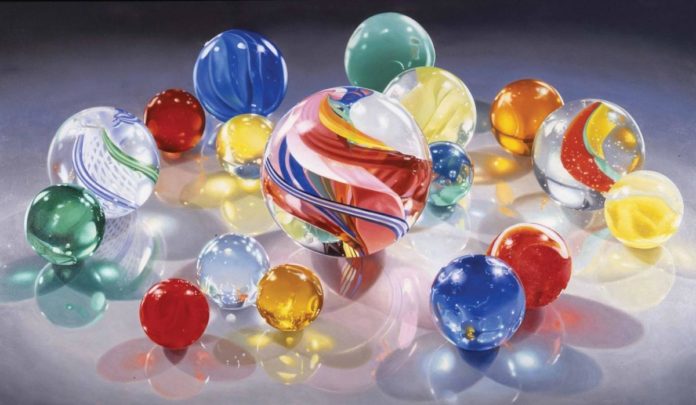PHOTOREALISM
Photorealism is a painting style that emerged in Europe and the USA in the late 1960s, characterised by its painstaking detail and precision
Summary of Photorealism
The name Photorealism (also known as Hyperrealism or Superrealism) was coined in reference to those artists whose work depended heavily on photographs, which they often projected onto canvas allowing images to be replicated with precision and accuracy. The exactness was often aided further by the use of an airbrush, which was originally designed to retouch photographs. The movement came about within the same period and context as Conceptual art, Pop art, and Minimalism and expressed a strong interest in realism in art, over that of idealism and abstraction. Among several male practitioners of Photorealism there is an interest in themes of machinery and objects of industry such as trucks, motorcycles, cars, and even gumball machines, whereas Audrey Flack, the sole female practitioner, infuses her works with greater emotionality and the transience of life. Ultimately, the Photorealists were successful in attracting a wide audience, but they are often overlooked by art historians as an important avant-garde style.
Key Ideas & Accomplishments
- To a degree not previously accomplished, Photorealism complicates the notion of realism by successfully mixing together that which is real with that which is unreal. While the image on the canvas is recognizable and carefully delineated to suggest that it is accurate, the artist often based their work upon photographs rather than direct observation. Therefore, their canvases remain distanced from reality factually and metaphorically.
- Many Photorealists adamantly insist that their works, which are laden with such mass and consumer culture icons as trucks, fast food restaurants, and mechanical toys, are not communicative of social criticism or commentary. However, it is hard to deny that these works are recognizably American. At times, the actual work rather than the artist’s words is our most useful guide. In this manner, there is the contrast between the reality and primacy of the word or text, over the visual within our society.
- Since the advent of photography in the early-19th-century artists have used the camera as a tool in picture making; however, artists would never reveal in paint their dependency on photographs as to do so was seen as “cheating”. In contrast, Photorealists acknowledge the modern world’s mass production and proliferation of photographs, and they do not deny their dependence on photographs. In fact, several artists attempt to replicate the effects of photography (getting away from the natural vision of our eyes) such as blurriness or multiple-viewpoints, because they favor the aesthetic and look. Therefore, while the resulting image is realistic, it is simultaneously one-stage away from reality by its dependence on the reproduced image. These works question traditional artistic methods, as well as the differences between reality and artificiality.
- The representation of light, as well as the interaction of light and color together has concerned artists throughout the ages. By using slide machines to project images onto bare canvas Photorealism for the first time unites color and light together as one element. The capturing of light is most especially evident in the highly reflective surfaces of steel and chrome.
- Photorealists, along with some practitioners of Pop art, reintroduced the importance of process and deliberate planning over that of improvisation and automatism, into the making of art, draftsmanship, and exacting brushwork. In other words, the traditional techniques of academic art are again of great significance, and painstaking craftsmanship is prized after decades of the spontaneous, accidental, and improvisational.
Photorealism rejected the painterly qualities by which individual artists could be recognised, and instead strove to create pictures that looked photographic. Visual complexity, heightened clarity and a desire to be emotionally neutral led to banal subject matter that likened the movement to pop art.
The early 1990s saw a renewed interest in photorealism, thanks to new technology in the form of cameras and digital equipment which offered more precision.
Source:https://www.theartstory.org/movement/photorealism/




